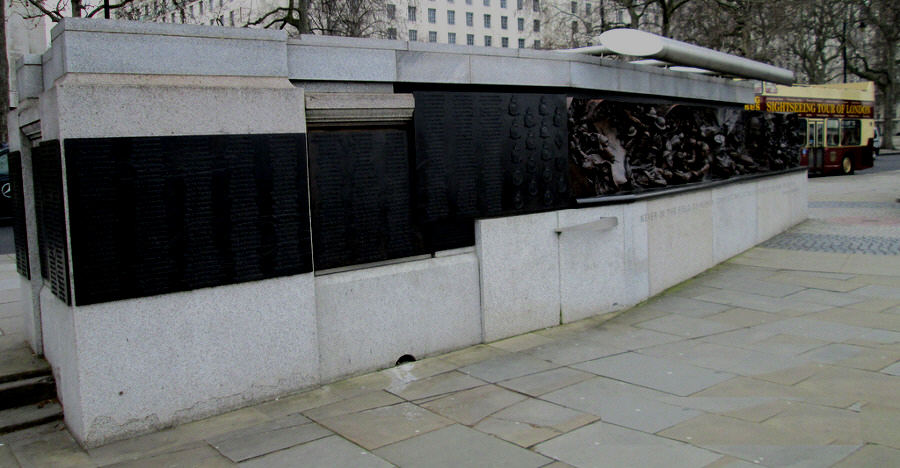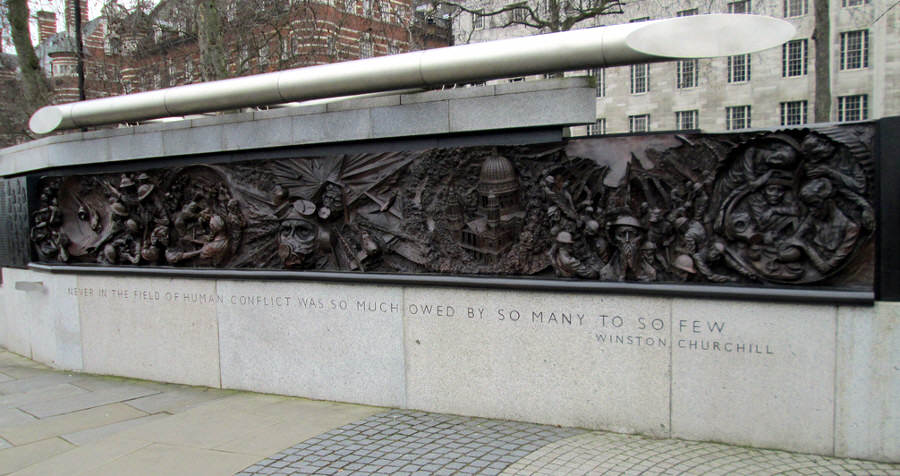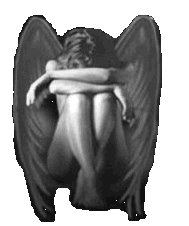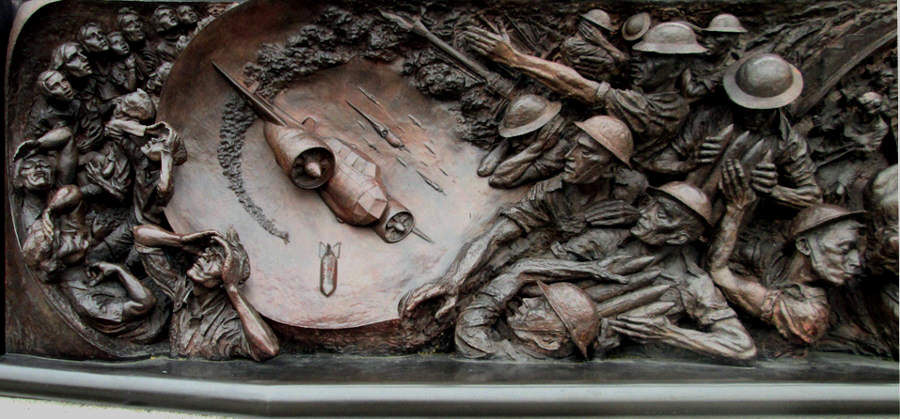 |
A German Dornier dropping a bomb while gunners take action and worried citizens scan the sky, watching the massive battle for their freedom in the bright summer skies.
Paul Day: "There are some superb archive photographs of Kentish hop pickers watching from the shelter of slit trenches the air battle raging overhead. The expression on many faces seems, at this early stage of the War at least, to be one of curiosity and fascination. The real nature of the threat had not yet become apparent. Images of London's children sheltering in the same way reveal their amusement at seeing dots racing around the skies. Not exactly what I imagine when thinking of the frontline of a war and yet this was it in Britain in 1940. The contrast between civilian normality and a pilot's life at angels twenty was very marked." |
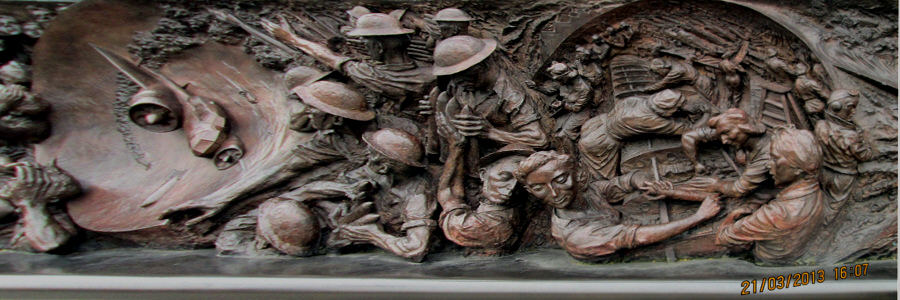 |
Paul Day, the sculpturer of the memorial, points out that the war was a liberation for women - "... this War wrote a major chapter in the evolution of Society's attitude to women in the work place. The woman worker's role did not stop at the aircraft and munitions factory gates. Women ferry pilots also flew the aircraft from the factory to the airfield. This is not political correctness, just interesting, historical fact." Note the gunner blowing a cheeky kiss to the "bird" working at the Vickers Supermarine factory assembling the unmistakable form of a Spitfire's wing. At the left of "Women Power", ladies sit at work benches assembling components for the war effort. |
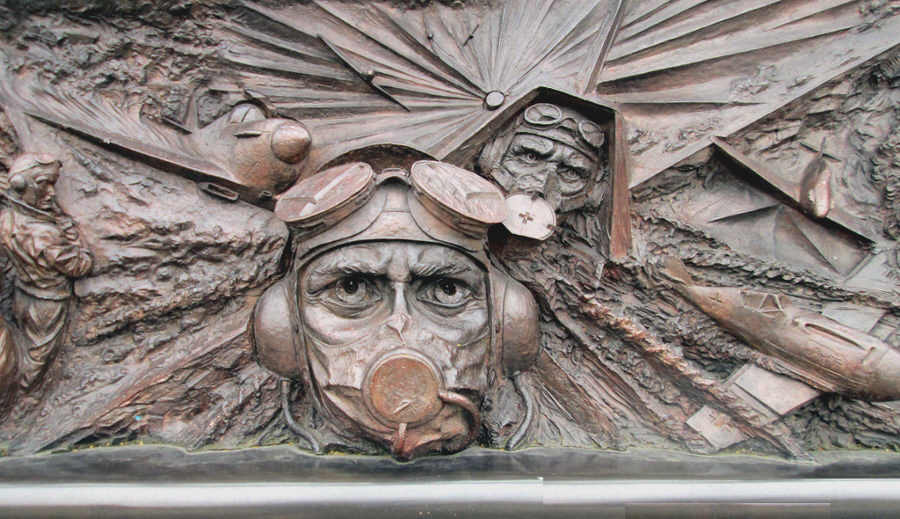 |
The Spitfire pilot with the Messerschmitt pilot on his tail - note the reflection of the Spitfire's canopy in the goggle lenses of the RAF pilot.
A closer look at the fighter pilot's face while under attack reveals the stunning depth, richness and even and "colour" Paul Day manages to wrest from bronze. |
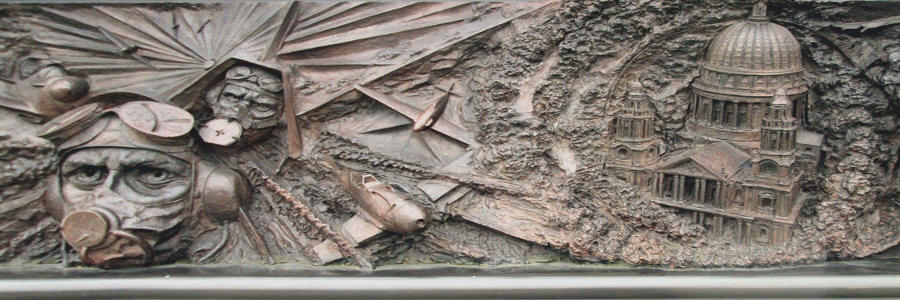 |
The famous photograph of St Paul's still standing amid the smoke and flames of London during the Blitz was used by both the English and the Germans for propaganda purposes - the Germans used it to show their people how close London was to total destruction, and the English used it to show resolve. Paul Day explains how he used this iconic image in his monument: St Paul's became the symbol of resistance during the Blitz having remained standing while all around was demolished. The famous photo collage of the Cathedral inspired this sequence. Although, not part of the Battle of Britain as such, the Blitz was the direct result of Dowding's successful strategy to save the RAF and keep fighters in the air at all costs. German attack passed from airfields and factories to almost any other legitimate and less legitimate target. |
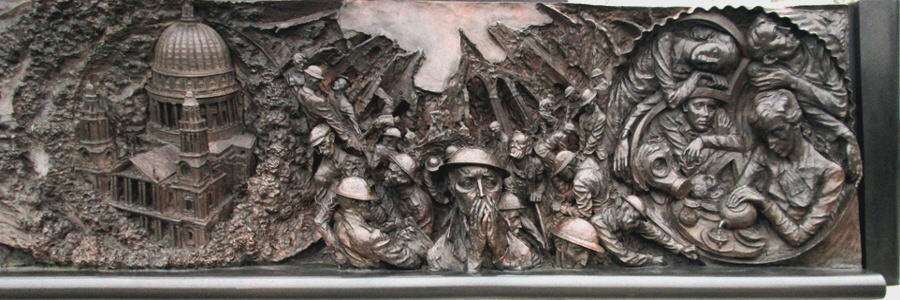 |
Clearly, the Battle of Britain London monument glorifies nothing, but lays down an honest account of what Englanders endured - death, horror, and stress. The sheer depth of perspective of this panel is breathtaking. The artists explains:
"I think one of the most troubling aspects of the Battle was the bombing of heavily populated areas using inaccurate means and the subsequent horrors that befell certain cities. The suddenness of loss through bombardment is dramatically portrayed in Guy Weston's film version, "The Battle of Britain" (1968). That people could wake up the morning after a bombardment and find their home blown away is terrifying. Of course some weren't to wake up at all. This scene is in homage to the rescue services and a reminder that, although the British people were tried by fire, the Nation was never to be put through occupation and the trauma that entailed. In any case, had we lost this battle, the war in the West would have been definitively lost, and probably the War.
The shock on the warden's face, the anger and determination in the eyes of the rescue worker over the warden's shoulder, the depth of the perspective - all combine to make this one of my favourite panels in the entire monument.
Right next to the horrific panel of Londoners picking through the rubble, sits a panel of exceeding peace - almost Madonna and Child-like. Paul Day calls this panel the "Brew Up": Making tea in an Anderson shelter is not an act of great heroism, more one of defiance. I like this as an image of the British spirit of 1940, like the home guard with broom handles and bicycles, the removal of signposts to confound the enemy, the collection of saucepans to make fighters, and so on and so on, a tin dug-out at the bottom of the suburban garden offering shelter to a whole family against 1000 pounders; derisory means on the face of it but cultivating that immensely powerful spirit of resistance so essential to the Nation's survival. |






